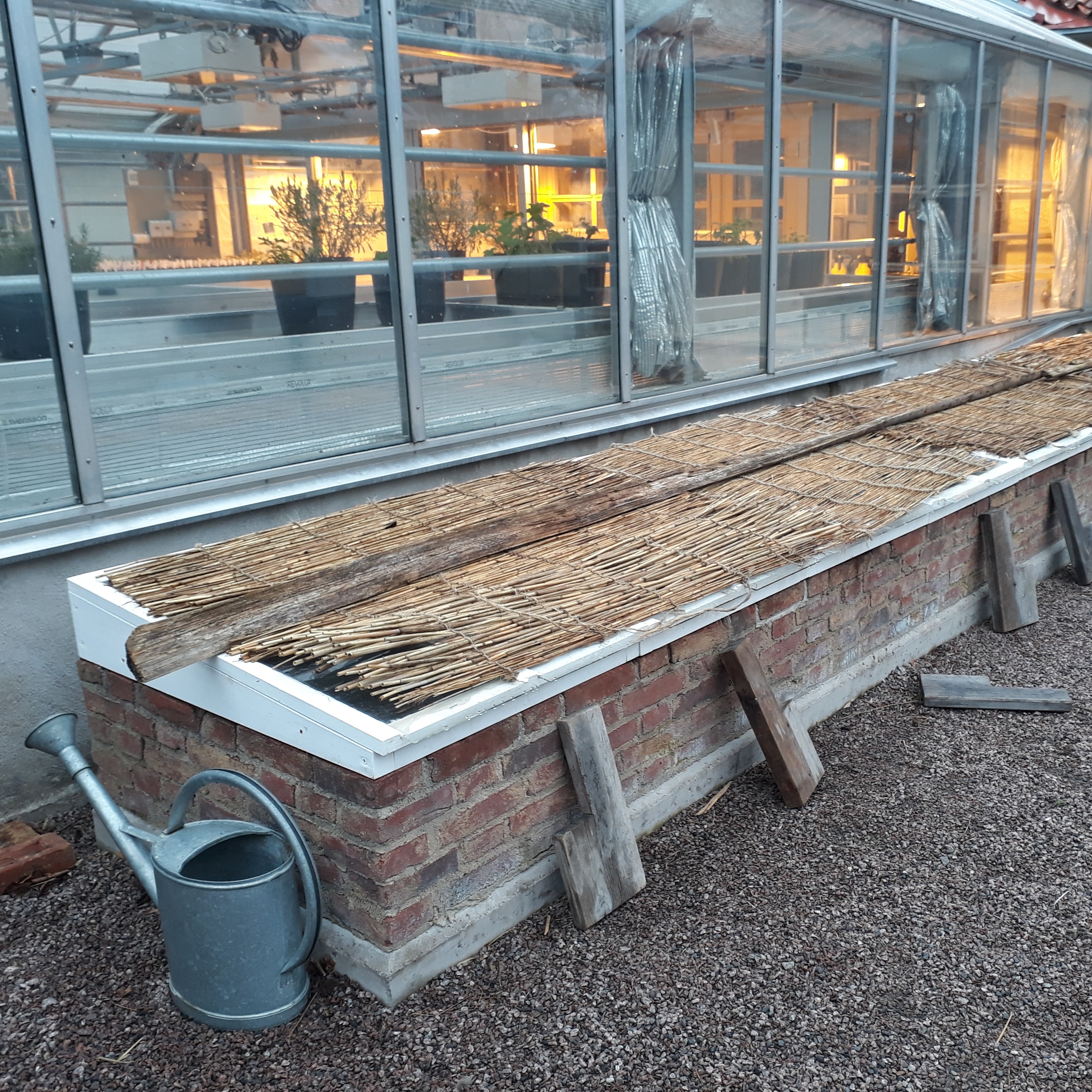Craft knowledge and sustainability
a case study in historical cultivation methods
DOI:
https://doi.org/10.7577/formakademisk.5479Keywords:
Traditional garden craft, sustainability, green cultural heritage, intangible cultural heritage, historic gardens, garden managementAbstract
Historical gardens and green cultural environments maintain and transmit parts of our biocultural heritage. The gardener's maintenance and cultivation work affects both the content and our experience of these environments. While modern management methods in many cases are necessary to fulfil requirements for the work environment and efficiency, we want to investigate the extent to which alternative/traditional working methods can contribute with other qualities and with solutions for more sustainable management. Garden and Landscape Crafts bachelor's programme students at the Department of Conservation are practicing a lost craft skill by participating in a comparative cultivation experiment to gain an understanding of historical methods and their relation to the present, as well as the future development and revitalisation of sustainable historical environments.
References
Bentz Høgseth, H., & Rannved Rafnsson, M. (2022). Notations on craft:Movement, gesture and bodily expression. In T. Westerlund, C. Groth, & G. Almevik (Eds.), Craft sciences (pp. 158–180). Göteborg: Acta Universitatis Gothoburgensis. https://doi.org/10.21524/kriterium.40.h https://doi.org/10.21524/kriterium.40.h
Emanuelsson, U. (2023). Historia, biologi och ekologi behöver varandra. Biodiverse, (2), 24-25.https://www.biodiverse.se/articles/kronika-historia-biologi-och-ekologi-behover-varandra/
Groth, C. (2017). Making sense through hands: Design and craft practice analyzed as Embodied Cognition[Doctoral dissertation, Aalto University]. Aalto Arts Books.http://urn.fi/URN:ISBN:978-952-60-7130-5
Kimmerer, R. W.(2013). Braiding sweetgrass(2nded). Milkweed. https://www.booksfree.org/wp-content/uploads/2021/09/9781571313560.pdf
Leopold, A. (1949). A Sand County almanac and sketches here and there. Oxford University Press.
McIntyre, B. D., Herren, H. R., Wakhungu, J., & Watson, R. T. (2009). International assessment of agricultural knowledge, science and technology for development (IAASTD): Global report. Island Press.
Olausson, I. (2014). En blomstrande marknad: handelsträdgårdar i Sverige 1900-1950 med fyra fallstudier i Stockholms län[A booming market:commercial gardens in Sweden 1900-1950 with four case studies in Stockholm County][Doctoral thesis, Swedish University of Agriculture]. Acta Universitatis Agriculturae Sueciae.https://res.slu.se/id/publ/53190
Seiler, J. (2020). Management regimes for lawns and hedges in historic gardens(Gothenburg Studies in Conservation 46)[Doctoral thesis,University of Gothenburg].https://gupea.ub.gu.se/handle/2077/62813
Sjöberg, C. (2019). Historiska substrat för plantuppdragning: ett jämförande odlingsförsök med recept från 1912. Bulletin för trädgårdshistorisk forskning, (32), 28-30. https://www.gu.se/sites/default/files/2020-05/Historiska%20substrat%20f%C3%B6r%20plantuppdragning_0.pdf
Tunón, H. (2021). Lokalt naturbruk, folklig kunskap och förhållandet till mångfalden[Local nature use, folk knowledge and the relationship to diversity]. InH. Tunón &K.Sandell(Eds.), Biologisk mångfald, naturnyttor och ekosystemtjänster: svenska perspektiv på livsviktiga framtidsfrågor(pp. 81-91). SLU, Centrum för Biologisk Mångfald.https://www.slu.se/globalassets/ew/org/centrb/cbm/dokument/publikationer-cbm/antologi-bm/12-lokalt-naturbruk-folklig-kunskap-och-forhallandet-till-mangfalden.pdf
Tyler, T. (2019). Sjuttiofem år efter Nils Hylander –nytt ljus över engelska landskapsparker och deras flora i Sverige[Seventy-five years after Nils Hylander -new light on English landscape parks and their flora in Sweden]. Svensk Botanisk Tidskrift, 113(3-4),194-218.
Vea. (2022). Soil Management in Historic Gardens.Garden Conservation.https://gardenconservation.eu/activities/soil-management-in-historic-gardens/
Westerlund, T. (2022). Knowledge in our hands: Analytical tools for craft knowledge communication.Craft Research, 13(2), 237-259.https://doi.org/10.1386/crre_00078_1 https://doi.org/10.1386/crre_00078_1

Downloads
Published
How to Cite
Issue
Section
License
Copyright (c) 2023 Catarina Sjöberg, Maria Löfgren

This work is licensed under a Creative Commons Attribution-NoDerivatives 4.0 International License.
Authors who publish with this journal agree to the following terms:
- Authors retain copyright and grant the journal right of first publication with the work simultaneously licensed under a Creative Commons Attribution 4.0 License that allows others to share the work with an acknowledgement of the work's authorship and initial publication in this journal.
- Authors are able to enter into separate, additional contractual arrangements for the non-exclusive distribution of the journal's published version of the work (e.g., post it to an institutional repository or publish it in a book), with an acknowledgement of its initial publication in this journal.
- Authors are permitted and encouraged to post their work online (e.g., in institutional repositories or on their website) prior to and during the submission process, as it can lead to productive exchanges, as well as earlier and greater citation of published work (See The Effect of Open Access).
- The author(s) must manage their economic reproduction rights to any third party.
- The journal makes no financial or other compensation for submissions, unless a separate agreement regarding this matter has been made with the author(s).
- The journal is obliged to archive the manuscript (including metadata) in its originally published digital form for at least a suitable amount of time in which the manuscript can be accessed via a long-term archive for digital material, such as in the Norwegian universities’ institutional archives within the framework of the NORA partnership.
The material will be published OpenAccess with a Creative Commons 4.0 License which allows anyone to read, share and adapt the content, even commercially under the licence terms:
This work needs to be appropriately attributed/credited, a link must be provided to the CC-BY 4.0 licence, and changes made need to be indicated in a reasonable manner, but not in any way that suggests that the licensor endorses you or your use.



